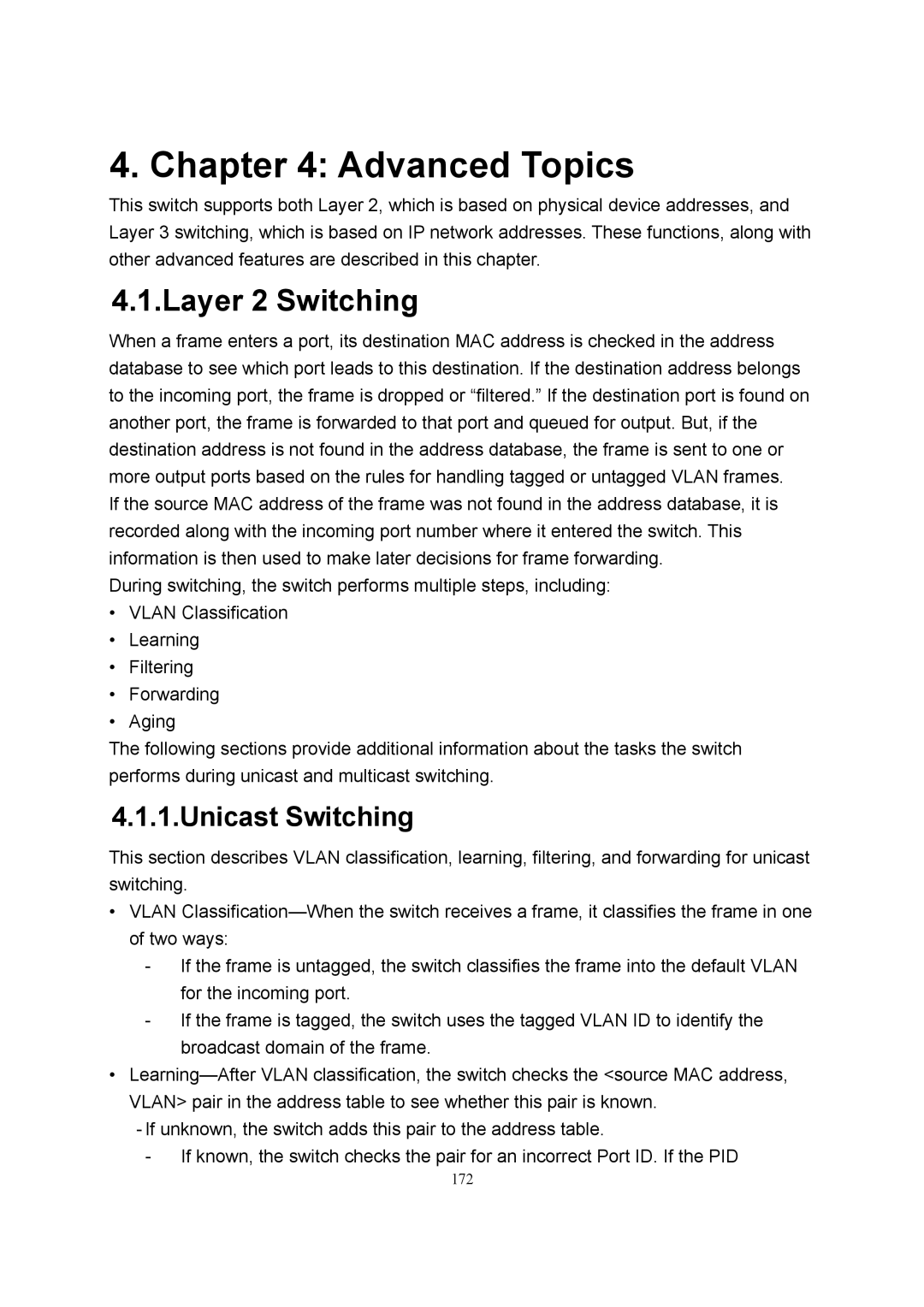4. Chapter 4: Advanced Topics
This switch supports both Layer 2, which is based on physical device addresses, and Layer 3 switching, which is based on IP network addresses. These functions, along with other advanced features are described in this chapter.
4.1.Layer 2 Switching
When a frame enters a port, its destination MAC address is checked in the address database to see which port leads to this destination. If the destination address belongs to the incoming port, the frame is dropped or “filtered.” If the destination port is found on another port, the frame is forwarded to that port and queued for output. But, if the destination address is not found in the address database, the frame is sent to one or more output ports based on the rules for handling tagged or untagged VLAN frames.
If the source MAC address of the frame was not found in the address database, it is recorded along with the incoming port number where it entered the switch. This information is then used to make later decisions for frame forwarding.
During switching, the switch performs multiple steps, including:
•VLAN Classification
•Learning
•Filtering
•Forwarding
•Aging
The following sections provide additional information about the tasks the switch performs during unicast and multicast switching.
4.1.1.Unicast Switching
This section describes VLAN classification, learning, filtering, and forwarding for unicast switching.
•VLAN
-If the frame is untagged, the switch classifies the frame into the default VLAN for the incoming port.
-If the frame is tagged, the switch uses the tagged VLAN ID to identify the broadcast domain of the frame.
•
-If unknown, the switch adds this pair to the address table.
-If known, the switch checks the pair for an incorrect Port ID. If the PID
172
